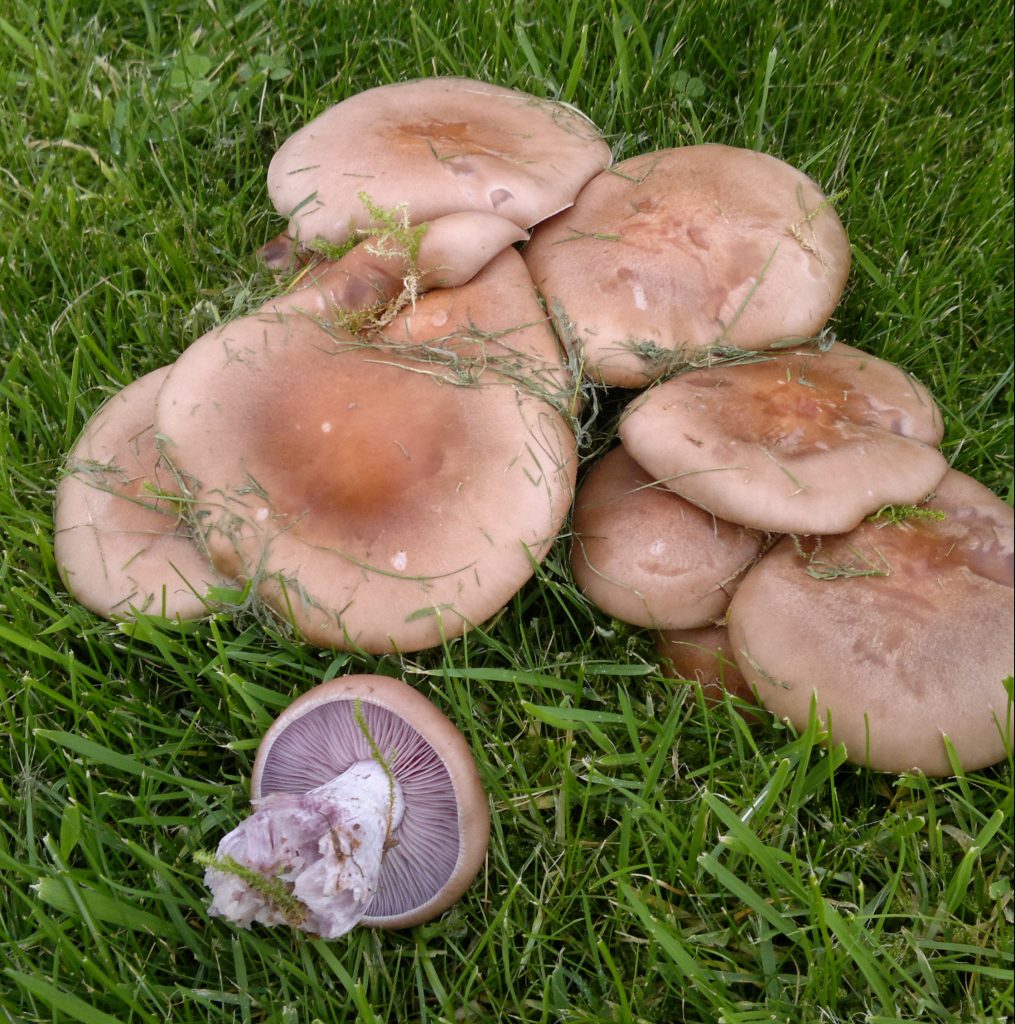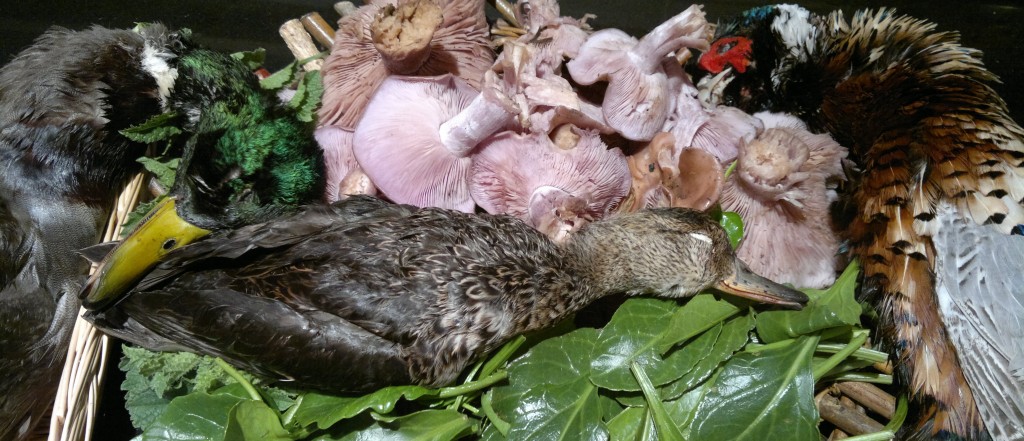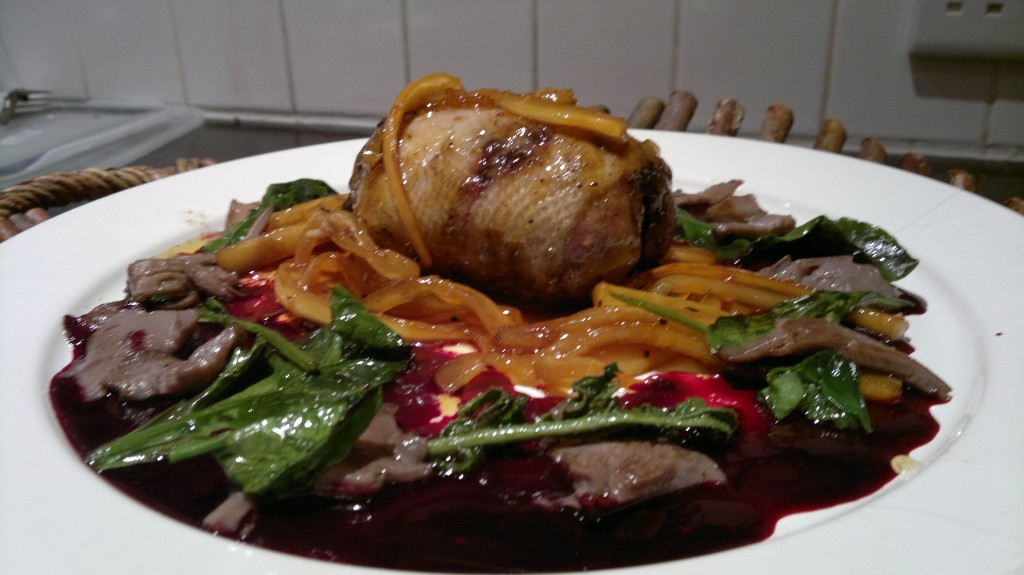Wood blewits – identification, distribution, edibility
Wood blewit – Clitocybe nuda (previously Lepista nuda)
- Edibility 4/5 – must be cooked – some people react adversely – try just a little, well cooked, first time round
- Identification 4/5
- Distribution 3/5
- Season – October – December
- Habitat – Wood edges, and road verges, under most tree types, with a liking for leaf litter
- Key features: Smooth, purple cap, browning with age, 5 – 15cm, domed at first, becoming flat and often upturned with age. Bright purple crowded sinuate gills, becoming drabber with age, but always with a blue/lilac hue. Stem bluish/lilac and fibrous. Delightful aromatic, floral scent.
Similar species:
- Field blewits (Lepista saeva) are similar, with a paler cap and gills, and growing on calcerous grassland. They are just as delicious as their woodland cousins, and can be used in similar ways.
- Sordid blewits (Lepista sordida) are quite similar to wood blewits, though generally frailer, and can also be eaten.
- Purple webcaps (Cortinarius violaceus) and other more common purple stemmed webcam (cortinarius) species could be mistaken for blewits by the unobservant. While you would be wise to avoid eating any webcap without careful research, the purple varieties are not among its most worryingly toxic members, though they do all contain some potentially troublesome compounds. Distinguish webcaps by their lack of perfumed scent, and by carefully inspecting for thread-like remnants of their web-like ring on the gills. If in any doubt, do a spore print – all the blewits have creamy white to pale pink spores, while webcaps have rusty-brown spores.
Wood blewits generally do not appear until there has been at least a light frost. This makes them doubly appealing as other top gourmet mushrooms can become scarce at this point in the season. And make no mistake – these are right up the top tier of the finest edible fungi.
Unlike many of the tastiest mushrooms which are myccorrhizal (growing in complex symbiosis with trees), blewits are saprophytes, living off dead matter and breaking it down. As long as there is leaf litter present, even broken down through the top soil layer, wood blewits can thrive. I normally find them on wood edges (some of my biggest harvests come from needle litter on the edge of conifer plantations), beneath hedgerows, in rotting piles of grass cuttings, and even quite regularly in grass some distance from the nearest trees. You will seldom come across a lone blewit and often find them in large clumps or loose rings sometimes several metres in diameter. This can make for very fruitful picking, though there may be some wastage as insects enjoy them as much as we do. Quickly splitting senior specimens down the middle will reveal any infestation.
Blewits have a slippery texture when cooked – but slippery in a delicious rather than slimy way. They have a floral bouquet – retained through cooking – which I think is unsurpassed in the fungal world (ceps and truffles excel in more earthy ways). That they appear as the game season kicks off is divine providence: a match made in heaven.
Stewed with pheasant, sauteed with seared venison liver, or pan fried with garlic to accompany roast fowl are my favourite late autumn treats. I traded some winter chanterelles with local gamekeeper for some teal and mallard and had about my finest fully-foraged meal of the year last week.
Related Pages:





6 Comments
My dad used to pick field blew it’s about 30 years ago ,I think they sent them to make dyes.i was thinking about starting to pick them but don’t know where to sell them afterwards.would be greatful for any help. Tom hopper
Personally i’d just eat them myself – delicious. Not sure there’s a market in them for dyeing anymore.
Are there any looky likies to watch out for Mark. I’ve some in amongst my elders, pretty sure but haven’t tried them yet. Smell of fresh orange juice.
Yes, I suppose you need to look out for livid pink gill. Not so similar really, but be aware.
And be careful of purplish varieties of cortinarius
Good point! …. Added to the text now. 🙂